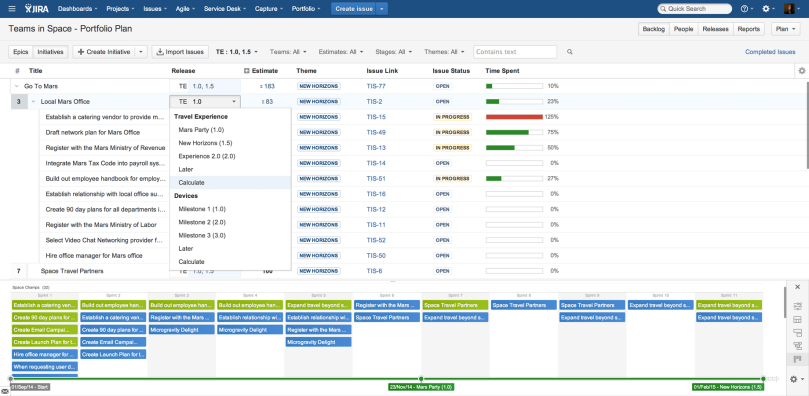 NEWS
NEWS
 NEWS
NEWS
 NEWS
NEWS
Collaborative software development vendor Atlassian Corp. PLC is adding what-if modeling to its Portfolio for JIRA portfolio management system and tightening integration between the portfolio manager and its flagship JIRA software tracking and project management system in a new release announced today.
Version 2.0 of Portfolio enables managers to plan and forecast release dates and optimize schedules in real time by experimenting with different resource allocation schedules. Models automatically cascade through to JIRA, where they can be presented as individual assignments to developers.
Portfolio was introduced in 2014 as a complement to JIRA for use primarily in enterprises managing hundreds or thousands of developers. However, the software has also proven surprisingly popular with smaller shops as the advent of DevOps and microservices has made development more iterative. “Some of the smaller teams find that as development projects become more componentized, they need a glue across all of them,” said Cameron Deatsch, head of growth and acquisition at Atlassian.
The new what-if functionality provides a virtual sandbox in which managers can experiment with different staffing and resource allocation models to achieve optimal performance. For example, if a software release depends upon updates to multiple components completing simultaneously, managers can identify lagging projects and reallocate resources to get them in sync, Deatsch said. Dependency analysis is performed in Portfolio based upon assets and constraints defined in Jira.
Changes aren’t reflected in JIRA until they’re committed. “Once you’re done playing in the sandbox and decide what to ship, you hit synch and it automatically identifies all the projects that people need to work on,” Deatsch said. The new feature doesn’t support goal-based modeling, in which the optimal outcome is defined and the system figures out how resources should be allocated. It also doesn’t allow managers to assign weighting criteria to developers based upon code quality or productivity. Those judgment calls can be made in JIRA, Deatsch said.
Portfolio has also been more tightly integrated with JIRA so that managers can create a plan instantly by connecting to the work-in-progress schedule. The company said that the portfolio plan can be ready to go in less than a minute, and the integration ensures that information is always up-to-date as schedules and resource allocations change. “The idea is to maximize development productivity by giving you one view across multiple projects,” Deatsch said.
Sprints and portfolio now synchronize with JIRA’s “agile boards,” which display issues from one or more projects for simple viewing and managing of work in progress. Issues are automatically assigned to project members based on dependencies set up in Portfolio. This ensures that projects aren’t left hanging while developers wait for a dependent project to complete.
Pricing begins at $10 per month for 10 users. Atlassian, which has no sales people, publishes a full price schedule here.
THANK YOU